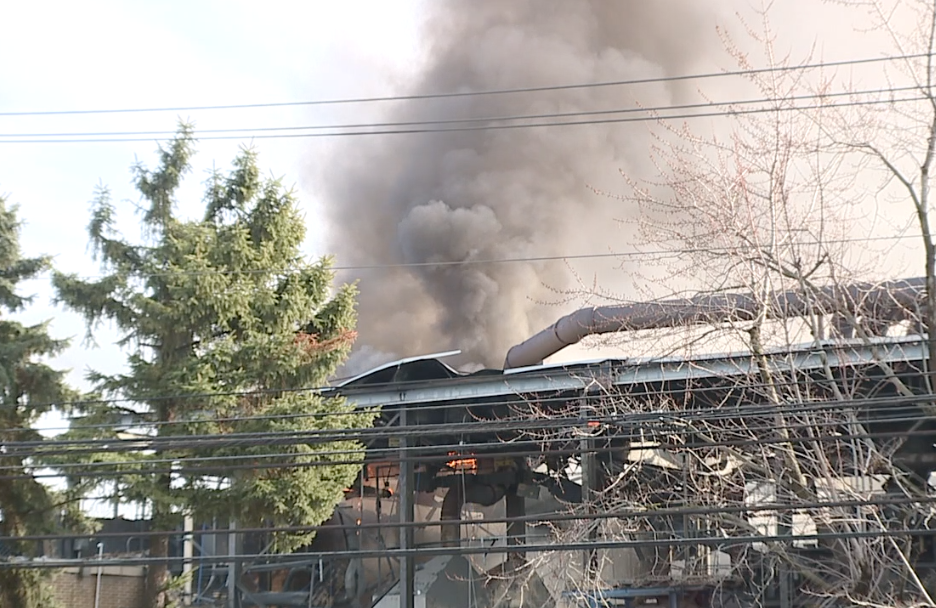Cleveland Lead Advocates for Safe Housing, or CLASH, is raising concerns about lead contamination in the soil after a Feb. 20 explosion at the I. Schumann Co. metal foundry in the Village of Oakwood, which killed a plant employee and injured 13 others.
CLASH co-founder Yvonka Hall told News 5 her agency has asked the Ohio EPA for test results and took its own soil samples to an independent lab, which it said indicated high levels of lead contamination.
“Within the two-mile radius the numbers were excessively high, so within that radius, there are some 20 daycare facilities," Hall said. “Lead is a heavy metal, so once it goes up, it’s going to come down and it’s going to come down it the soil and the neighboring communities. So, just think about the risk to children who are playing at playgrounds, for children in particular the lifelong impact of lead poisoning is irreversible.”

John Warren, Village of Oakwood City Council President, praised the work of the village fire and police departments in responding to the explosion site. Warren said the village is also waiting for Ohio EPA test results and referred News 5 to a half-page memo issued by fire Chief Dave Tapp on March 13. The memo indicated the Cleveland Air Authority is still monitoring 6 perimeter air quality monitors at the explosion site, and a dam was built to insure no water run-off makes its way to storm drains or creeks.
Warren said the Ohio EPA has informed the village no air, water, or soil contamination has so far been discovered due to the explosion.
“The Ohio EPA has assured us that at this point we have no indication of water contamination nor air quality contaminants," Warren said. “To date, the water tested, even downstream near Tinkers Creek has no apparent contaminants. “We have to trust their reporting to us that what they’re indicating as far as the air quality and any contaminants in the water. As far as our overall health, we have to depend on their creditability.”
News 5 contacted the Ohio EPA for our story, and the agency responded immediately and issue the following statement:
The fire occurred in the production area of the facility, which is not where the lead and cadmium are stored. This decreased the potential risk to the public during the fire. Ohio EPA has two nearby stationary air monitors that periodically test for lead. Data from the day following the fire did not show lead levels that would create a public health risk. National lead standards are based on a rolling three-month average. Current data shows that the area continues to comply with the national air quality standard for lead.
Ohio EPA has been in communication with the community group and has received their third-party soil sampling data. Ohio EPA will review this information. It is important to emphasize that Ohio EPA has been working with contractors and the company since the day of the fire and will continue overseeing the work to ensure that necessary remediation is completed.
I. Schumann has hired a contractor to manage the cleanup of this incident. The environmental contractor is creating a remediation plan that will be reviewed and approved by Ohio EPA. As the contractor builds the remediation plan, it will include a plan to collect additional environmental data to assess the contamination in the area. Ohio EPA is requiring this plan to include soil and sediment sampling. Once the extent of the contamination is known, possible cleanup alternatives will be evaluated based on various requirements, including overall protection of human health and the environment; short- and long-term effectiveness; ease of implementation; cost; and community acceptance. Ohio EPA will communicate the cleanup plan to the public and will seek public comment before the plan is finalized.
Still, Hall said she's concerned the Ohio EPA has not yet issued test results or a remediation plan to the public.
“We’re not talking about something that occurred yesterday, we’re talking about something that happened a month ago," Hall said. “We found out that information from the EPA that their air testing equipment was not working the day of the explosion. When we called them and emailed them and tried to get questions answered they kept trying to pass the buck.”





